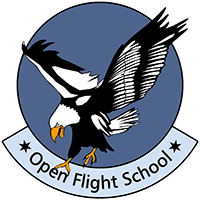Main Glossar
Currently sorted By last update descending Sort chronologically: By last update
TIT | |||
|---|---|---|---|
Turbine Inlet Temperature (dt.: Turbineneinlasstemperatur) Die TIT ist die Temperatur der Gase nach der Brennkammer des Triebwerkes, bevor sie auf die Turbine treffen. Weiterführende Informationen:
| |||
HSD | |||
|---|---|---|---|
VDI | |||
|---|---|---|---|
Vertical Display Indicator (dt.: vertikale Displayanzeige) Das VDI zeigt Lage- und Waffendaten an. Weiterführende Informationen:
| |||
OPORD | ||||
|---|---|---|---|---|
Dabei handelt es sich um die Abkürzung für Operation Order. Im deutschen werden die die Begriffe Operationsbefehl (Brigade und höher) bzw. Einsatzbefehl (Regiment und darunter) verwendet. Weitere Informationen: | ||||
FRAGO | ||||
|---|---|---|---|---|
Der Begriff FRAGO ist die Kurzform von Fragmentary Order und kann mit Einsatzbefehl, Ergänzungsbefehl oder Zusatzbefehl übersetzt werden. Damit wird eine Einheit über abweichende oder ergänzende Befehle zur OPORD (Operation Order) informiert. Es kann zum Beispiel kurz vor oder während einer Mission passieren, dass sich die Situation ändert und die Befehle der OPORD angepasst werden müssen. Der Befehlshaber gibt dann eine FRAGO heraus. Diese hat das selbe Format wie die OPORD, enthält aber nur die Abweichungen. Weitere Informationen: | ||||
NOE | ||||
|---|---|---|---|---|
Die Abkürzung steht für Nap-of-the-earth und wird im deutschen als Konturenflug bezeichnet. Dies ist ein Flugmanöver bei dem Hubschrauber und militärische Flugzeuge dicht über dem Boden fliegen um eine Sichtung oder eine Radarerfassung zu vermeiden. Weitere Informationen: | ||||
CAVOC | |||
|---|---|---|---|
CAVOK ist eine Abkürzung für Clouds And Visibility OK (zu deutsch Wolken und Sicht in Ordnung). Diese Abkürzung für eine Wetterbeschreibung wird in der Luffahrt verwendet. Damit werden gute Bedingungen für den Sichtflug ohne Einschränkungen gemeldet.Der Begriff wird unter anderem in ATIS-Meldungen, bei Meteorological Aviation Routine Weather Report (METAR) und Terminal Aerodrome Forecast (TAF) verwendet. Weitere Informationen: | |||
OAT | |||
|---|---|---|---|
Outside Air Temperature The temperature of the air around the aircraft. Low temperature causes the air to be more dense and so appear as if the aircraft is flying lower when assessed on a Barometric Altimeter. Average Air Temperature at sea level for the ICAO Standard Atmosphere is 15° Wiki: Outside Air Temperature | |||
AI | |||
|---|---|---|---|
Attitude Indicator The main instrument of understanding the aircraft‘s attitude with respect to earth’s surface. It is a gyro (or graphical representation) driven by either:
It is normally mounted centrally on an aircraft main instrument panel. It can be implemented as graphics within a “glass cockpit”. Further Information: Wikipedia | |||
RCDI | |||
|---|---|---|---|
VSI | |||
|---|---|---|---|
SUTTO | |||
|---|---|---|---|
Start Up, Taxi, Take-off Primarily referred to the fuel required to start up, taxi and take-off from the airfield to a point at which the climb is established. It can also refer to the time taken to get from start to established in the climb. | |||
Charlie | |||
|---|---|---|---|
Charlie Time The planned landing time on a vessel. Often also used for landing ashore. Usually the expected end of the sortie. | |||
Ramp | |||
|---|---|---|---|
Ramp Fuel The minimum fuel required to be in the airbase overhead prior to landing, or on deck if landing on a vessel. | |||
Chicken | |||
|---|---|---|---|
Chicken Fuel The minimum fuel required to continue the route as planned. | |||
Bingo | |||
|---|---|---|---|
Bingo Fuel The fuel required to fly directly back to base in a straight line. | |||
Clock Code | |||
|---|---|---|---|
Clock Code This has two meanings depending upon its application. Lookout - When applied to Lookout, Clock Code is a method of identifying an azimuth direction from the aircraft. Directions from the aircraft begin from 12 O’clock being directly ahead with 6 O’clock being directly astern. E.g. 4 O’clock indicates a direction past the abeam on the right side of the aircraft. Drift - When applied to Drift, Clock Code is a method of mental arithmetic to estimate the Sin() function. The difference between the wind direction and the aircraft‘s flight path is compared to minutes of a clock. The resulting potion of the hour is the portion of Max Drift to be used to estimate the angular correction to make to offset the aircraft‘s heading and so allow for drift, thus keeping the aircraft on track. E.g. 30˚ implies 30 minutes which is half an hour and so half the Max Drift should be applied towards the wind for the aircraft to maintain the desired track. | |||
Max Drift | |||
|---|---|---|---|
Max Drift A method of assessing the effect of wind on the aircraft drift from track. MAX DRIFT - The maximum drift an aircraft will suffer from a wind directly abeam the flight path. This is estimated by taking the windspeed and dividing it by the aircraft’s speed in nm / minute. E.g. An aircraft flying at 240 kts is covering 4 nm / minute. With a wind from directly abeam with a speed of 20 kts the aircraft will suffer a drift of 5˚. 20 / 4 = 5 See also: Clock Code | |||
3 OFFs | |||
|---|---|---|---|
Bearing Off, Distance Off, Time Off A method of checking leg tracking and timing at the mid leg check point during navigation BEARING OFF - At your mid leg check point assess your location compared to the check point and estimate the difference in bearing from the start waypoint. DISTANCE OFF - Estimate the Distance Off of track using the 1 in 60 Rule. TIME OFF - Note hoe the time abeam the check point compares to the planned time From these three Offs the aircraft can be flown back onto track or flown directly to the end leg waypoint. Also an assessment of the time of arrival at the leg end waypoint can be made or the aircraft speed changed to maintain a time over the waypoint. | |||
